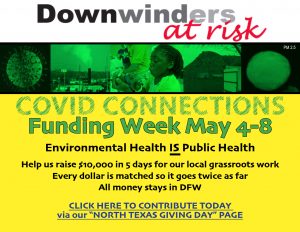COVID CONNECTIONS
Downwinders At Risk was already dedicated to fighting for environmental health in North Texas before the COVID virus hit.
Focusing on harmful Particulate Matter, we were already supporting grassroots efforts to reduce the air pollution burdens in predominantly Black and Brown neighborhoods.
We were already building out local capacity to monitor DFW air pollution and advocating an increased role for local cities and counties to protect their residents from environmental health threats.
All of that work was important before March. It’s become more important since then. But our responsibilities on the ground are outstripping our ability to support them adequately. Like other non-profits, the virus has made it harder to do even the simple things.
This week you can help provide some relief.
The Peace Development Fund has chosen to spotlight the COVID-connected work Downwinders is doing, along with that of 12 other grassroots groups across the country to help supplement their budgets during the crisis. The Fund and generous donors are matching every dollar we raise this week up to $10,000 – that’s a $20,00,000 grant on the line.
We have until Friday to raise the $10,000.
Beginning today and continuing thru Tuesday the 5th at Midnight you can help us meet this goal by contributing via our North Texas Giving Day Page.
Then Wednesday thru Friday the Development Fund has its own Downwinders Mighty Cause pay portal you can also use.
We’re using each day this week to show how our various pieces of program work is more relevant than ever before. Today it’s an update on our ambitious new DFW air monitoring network – SHAREDAIRSDFW.
We know everyone is having a hard time, but with the Development Fund matching your dollars, you can make whatever contribution you give go twice as far to benefit those at highest risk.
Thanks for your support,


Evelyn Mayo, Chair
COVID Connects:
Vulnerable Communities to the Need
for Better Air Pollution Monitoring
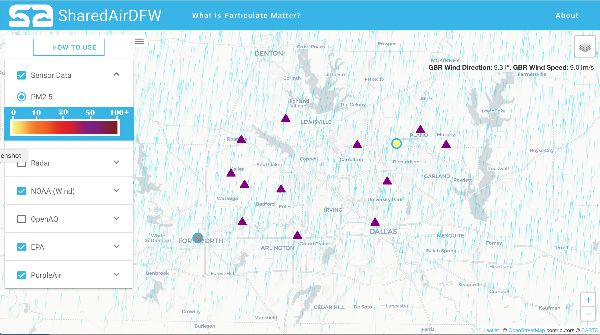
A screenshot of the SHAREDAIRDFW network map being assembled by UTD students and Downwinders at Risk. This map will soon be available at websites hosted by UTD, Dallas County and Downwinders, Only two of the over 100 new monitors are installed (dots) but more are on their way.
What is It?
The SHAREDAIRDFW community air quality monitoring network. 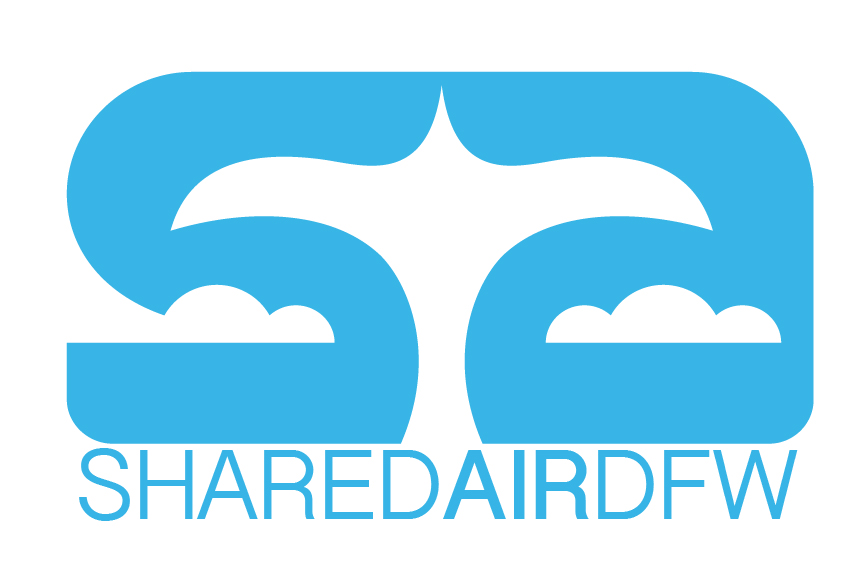 With its partners at UTD, Downwinders is building a new air monitoring network for DFW that will provide real time information from over 100 locations, including industrial hot spots in Joppa, West Dallas and Midlothian.
With its partners at UTD, Downwinders is building a new air monitoring network for DFW that will provide real time information from over 100 locations, including industrial hot spots in Joppa, West Dallas and Midlothian.
Why Do It?
Dallas County’s 2.7 million residents currently share only one EPA 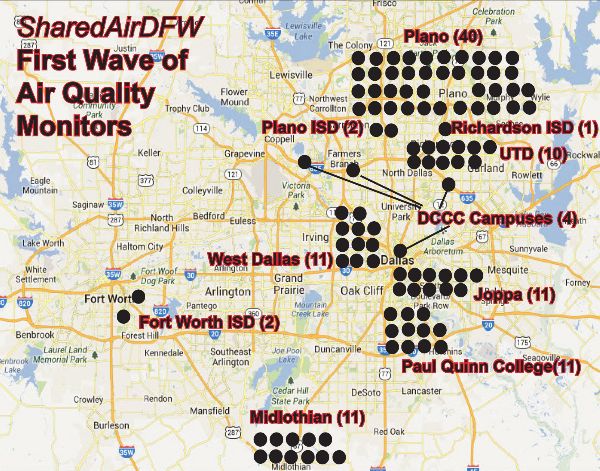 Particulate Matter air pollution monitor, north of downtown. Tarrant County has two and Denton County one. These monitors only reflect very local conditions and don’t reveal pollution levels in “frontline” neighborhoods where industry operates next to homes.
Particulate Matter air pollution monitor, north of downtown. Tarrant County has two and Denton County one. These monitors only reflect very local conditions and don’t reveal pollution levels in “frontline” neighborhoods where industry operates next to homes.
Making pollution burdens more equitable across racial and class lines requires identifying, measuring, and mapping those burdens: “You can’t fix what you don’t measure.” The SHAREDAIRDFW network is the first attempt to permanently map air pollution burdens across North Texas and make that information easily accessible to the public 24/7.Dallas County’s 2.7 million residents currently share only one EPA Particulate Matter air pollution monitor, north of downtown. Tarrant County has two and Denton County one. These monitors only reflect very local conditions and don’t reveal pollution levels in “frontline” neighborhoods where industry operates next to homes.
Making pollution burdens more equitable across racial and class lines requires identifying, measuring, and mapping those burdens: “You can’t fix what you don’t measure.” The SHAREDAIRDFW network is the first attempt to permanently map air pollution burdens across North Texas and make that information easily accessible to the public 24/7.
What’s the COVID Connection?
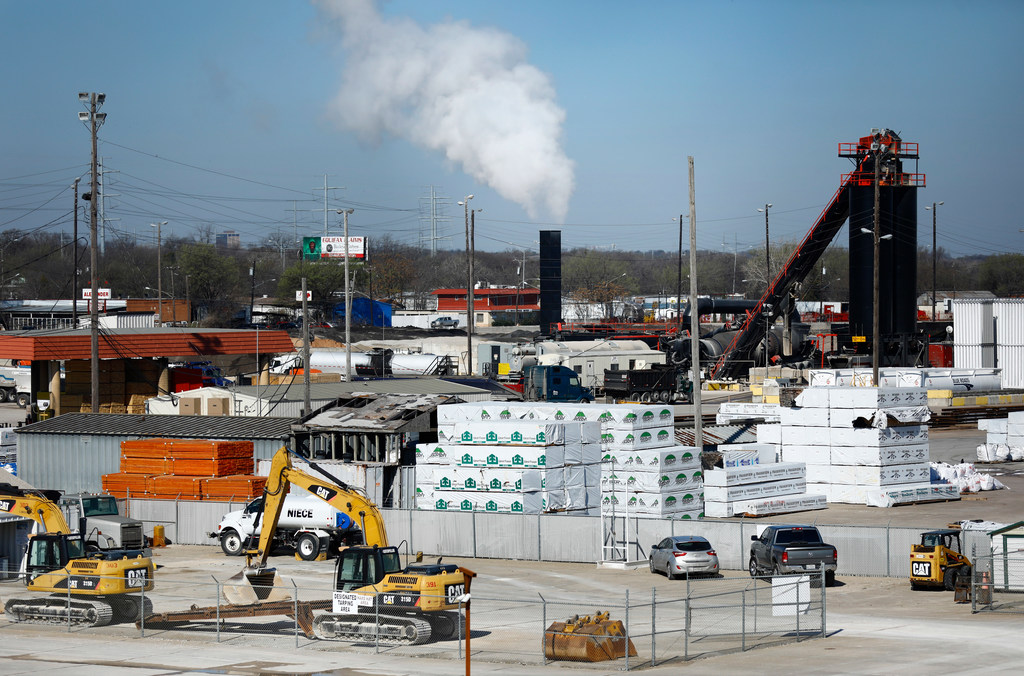
Research being done during the COVID pandemic concludes those living with the highest air pollution burdens are among the most vulnerable to being infected and dying from it. Specifically there seems to be a connection between a person’s exposure to Particulate Matter and Nitrogen Oxide air pollutants and the likelihood of contracting COVID. Past studies from the SARS epidemic also point to a strong link between exposure to air pollution and vulnerability to illness.By mapping where the heaviest air pollution burdens are, we can avoid adding to that burden and pursue policies targeting pollution decreases. We can begin to reverse the circumstances that makes the most pollution-impacted neighborhoods the most vulnerable to disease.
STATUS?
Via teleconferencing, UTD students are finishing up the digital map the Network 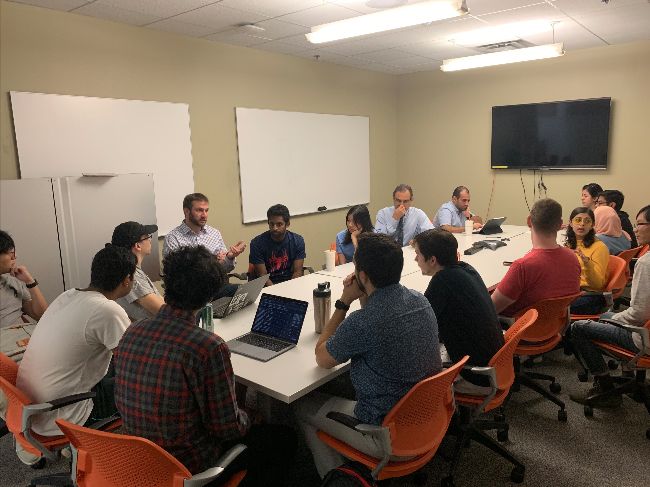 will use to display its real time air quality information. This map is meant to display not only the levels recorded by our own fleet of monitors, but easy access to the handful of EPA and Purple Air monitors in DFW as well.
will use to display its real time air quality information. This map is meant to display not only the levels recorded by our own fleet of monitors, but easy access to the handful of EPA and Purple Air monitors in DFW as well.
The map will be hosted on websites hosted by UTD, Dallas County and Downwinders.The first community monitors are slated for the former Freedman’s town of Joppa, where Downwinders bought a utility pole for the installation of the larger Mothership monitor. We’ve got a contract for Internet service and are now trying to tie down electrical power.
After a planned community meeting in March was canceled, we’re now gearing back up to find hosts for all ten “satellite” monitors. We hope to be able to begin operat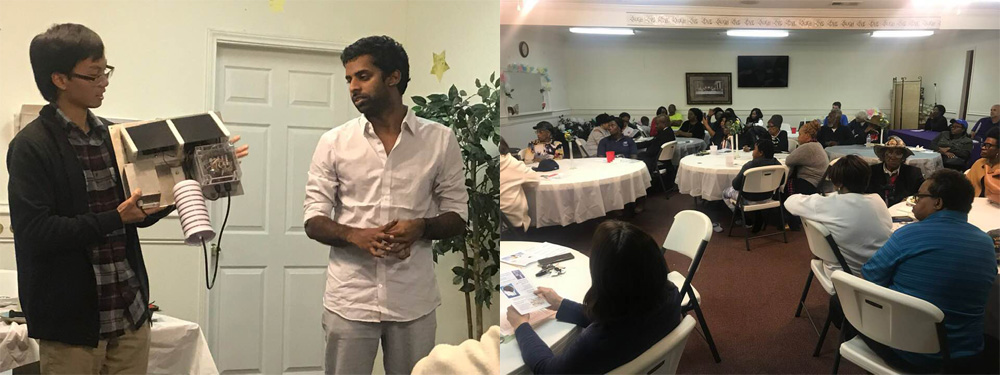 ion this summer.Once we’re up and running in Joppa, West Dallas is next and then Midlothian. In all Downwiwnders will be responsible for 33 of the over 100
ion this summer.Once we’re up and running in Joppa, West Dallas is next and then Midlothian. In all Downwiwnders will be responsible for 33 of the over 100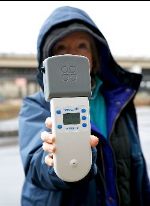 network monitors going up as part of the first wave installation.
network monitors going up as part of the first wave installation.
……MEANWHILE, Downwinders is using its portable monitors to record air quality in front line neighborhoods during the shelter-in-place periods so we’ll have a baseline for what cleaner air looks like.

